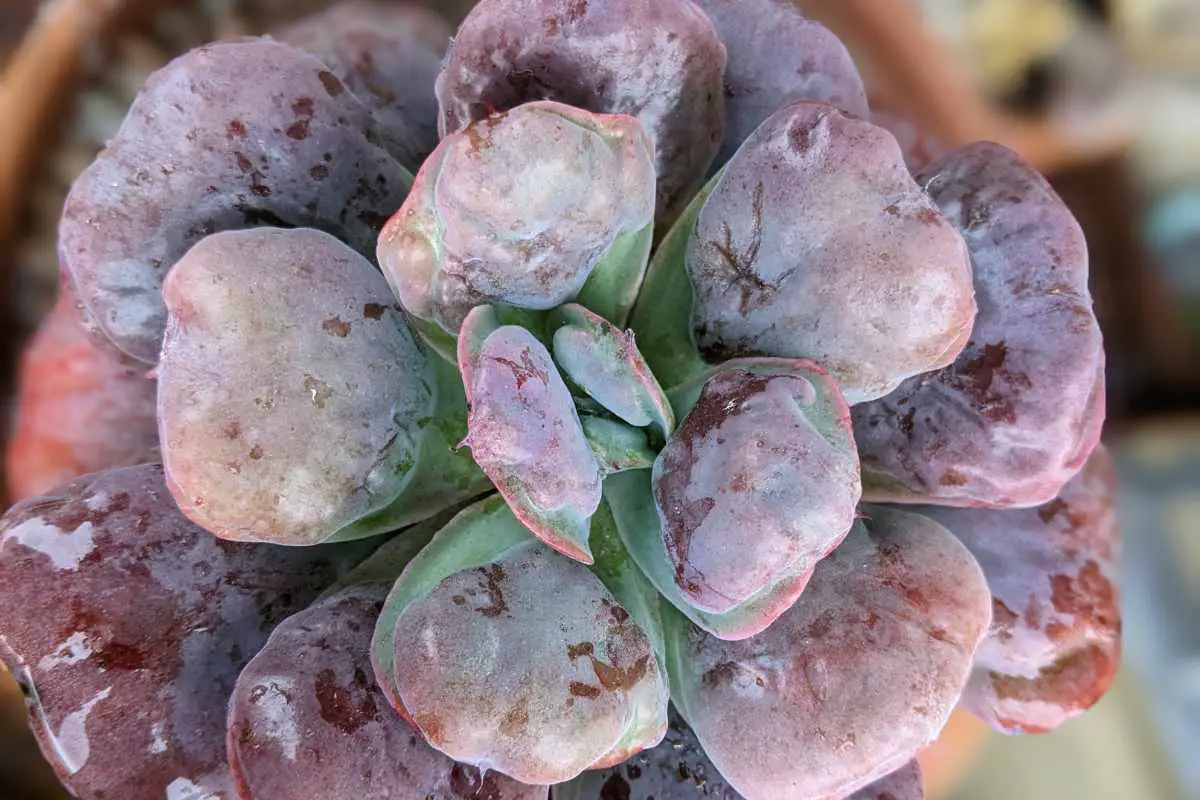Succulents are beautiful and low-maintenance plants that can add a touch of green to any home or garden. However, like all plants, succulents can fall prey to pests such as aphids, spider mites, and mealybugs. Fortunately, there is a natural solution that can help you get rid of these pests and prevent them from returning: diatomaceous earth.
In this guide, we’ll cover everything you need to know about using diatomaceous earth on succulents, including how to use it, the benefits of using it, and what pests it can target.
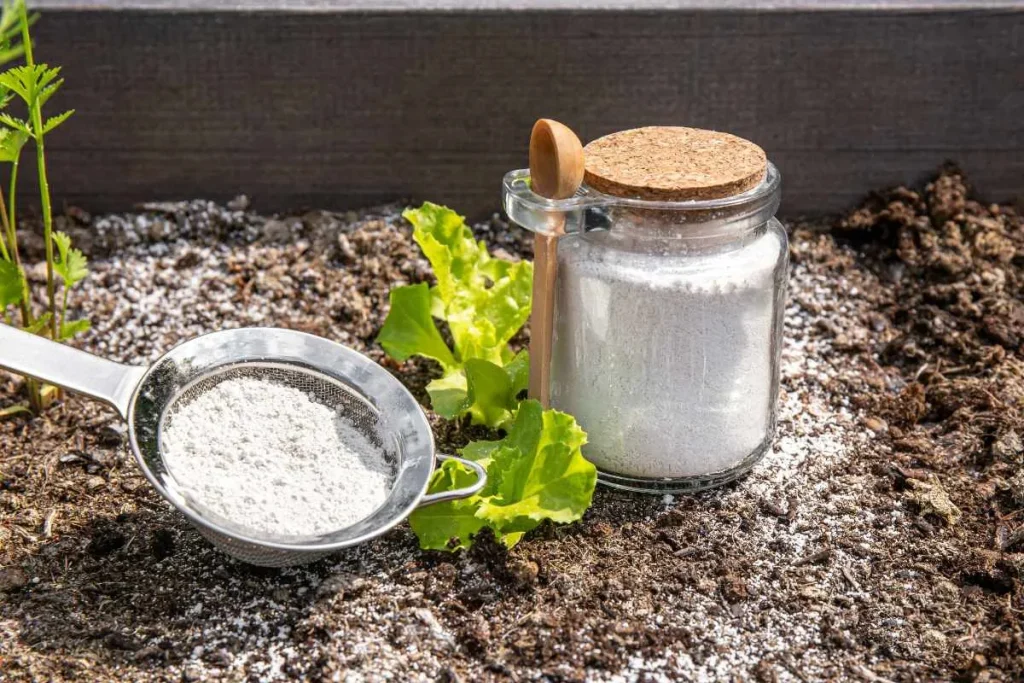
Dig in!
What is Diatomaceous Earth?
Definition
Diatomaceous earth (DE) is a fine powder made from the fossilized remains of diatoms, a type of microscopic algae. DE is composed of silica, which is abrasive and can be harmful to many insects. When insects come into contact with DE, it causes tiny cuts on their exoskeletons, leading to dehydration and death.
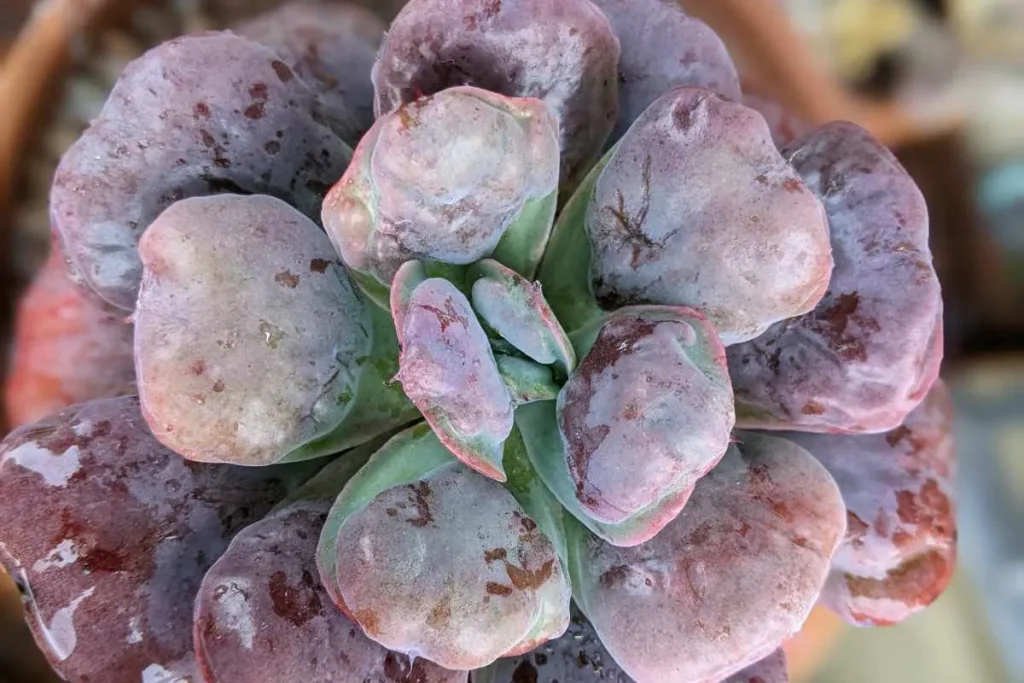
How to Use Diatomaceous Earth on Succulents
Diatomaceous earth is a safe and effective way to control pests on succulents. Here’s how to use it:
Step 1: Choose food-grade diatomaceous earth. Make sure to choose a food-grade DE that is specifically labeled for use on plants. This type of DE is safe for humans and pets and won’t harm beneficial insects like bees and ladybugs.
Step 2: Sprinkle the DE on your succulents. Sprinkle a light layer of DE on your succulents and the surrounding soil. Be sure to cover all areas of your plants, including the undersides of leaves and stems.
Step 3: Reapply as needed. Reapply the DE every few weeks or after rain to ensure continued protection against pests.
One of the ways I’ve used diatomaceous earth on my succulents is by mixing it into the soil while I mix in my other soil amendments which are usually Turface and pumice or perlite.
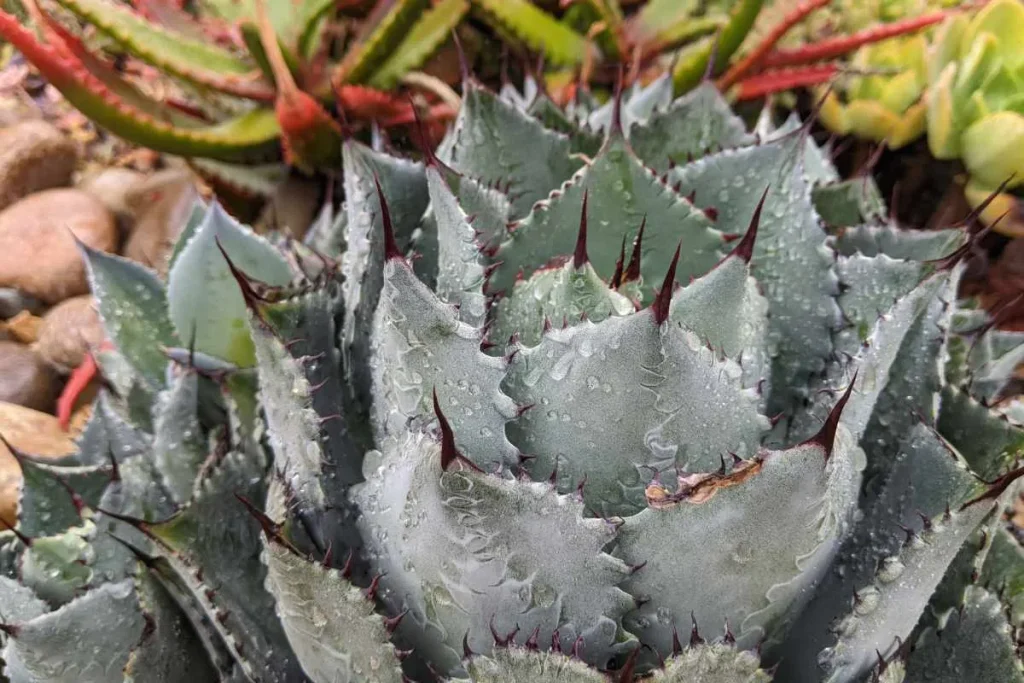
Benefits of Using Diatomaceous Earth on Succulents
Using diatomaceous earth on succulents has several benefits:
Benefit 1: It’s natural and safe. Diatomaceous earth is a natural and safe way to control pests without using harmful chemicals that can harm the environment, humans, and pets. Many pesticides are harmful to humans and animals which sometimes means you have to let the liquid insecticide to dry before you or your animals can be near it.
Benefit 2: It’s effective against a variety of pests. DE can target a variety of pests, including aphids, spider mites, mealybugs, and more. On the flip side, it kills all insects which come into contact with it so it can kill beneficial insects like ladybugs and bees.
Benefit 3: It’s easy to use. Applying DE to your succulents is easy and requires no special tools or equipment.
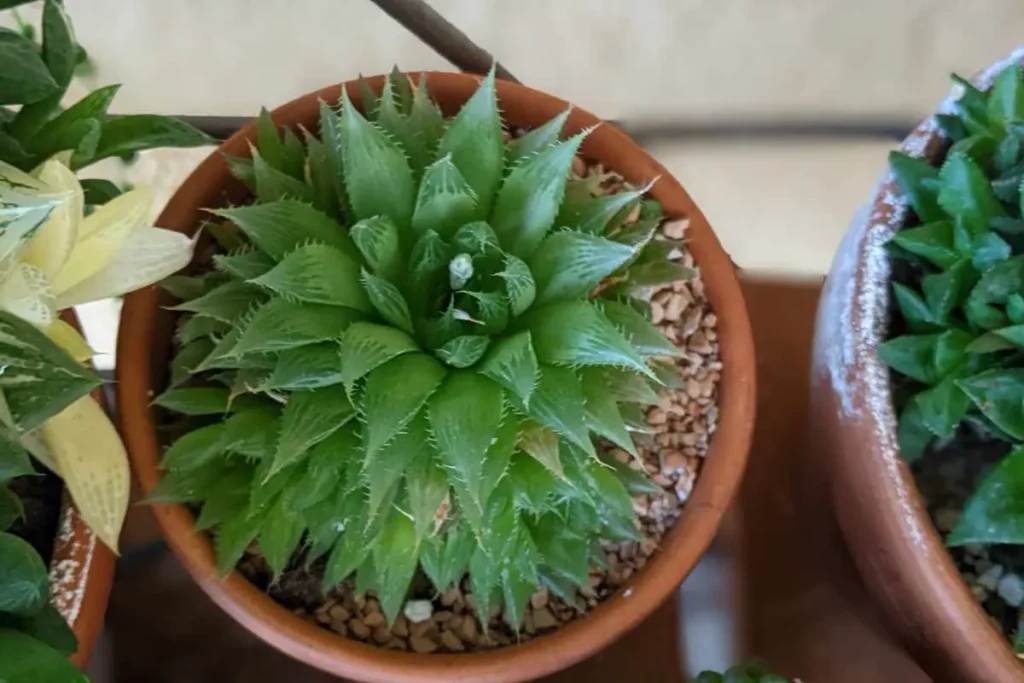
Using Diatomaceous Earth on Aloe Vera Plants
Aloe vera plants are succulents, and DE is safe to use on them. Follow the same steps outlined above for applying DE to succulents. Be sure to cover all areas of your aloe vera plant, including the undersides of leaves and stems.
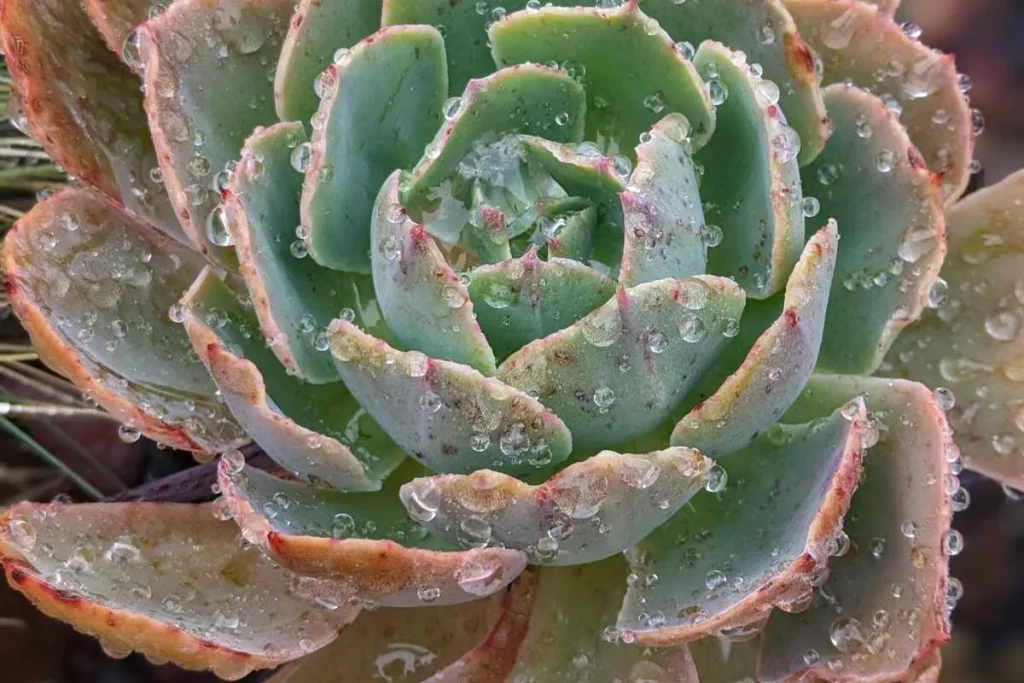
How to Apply Diatomaceous Earth to Succulents
When applying diatomaceous earth to succulents, it’s important to follow a few guidelines to ensure the best results:
Guideline 1: Apply when the soil is dry. Apply DE to your succulents when the soil is dry to prevent the DE from clumping or sticking to wet leaves.
Guideline 2: Apply after watering. Apply DE to your succulents after watering them. This will help the DE adhere to the leaves and soil, providing better protection against pests.
Guideline 3: Apply it lightly. Apply a light layer of DE to your succulents and the surrounding soil. Be sure not to apply too much DE, as this can lead to clumping and prevent proper air circulation.
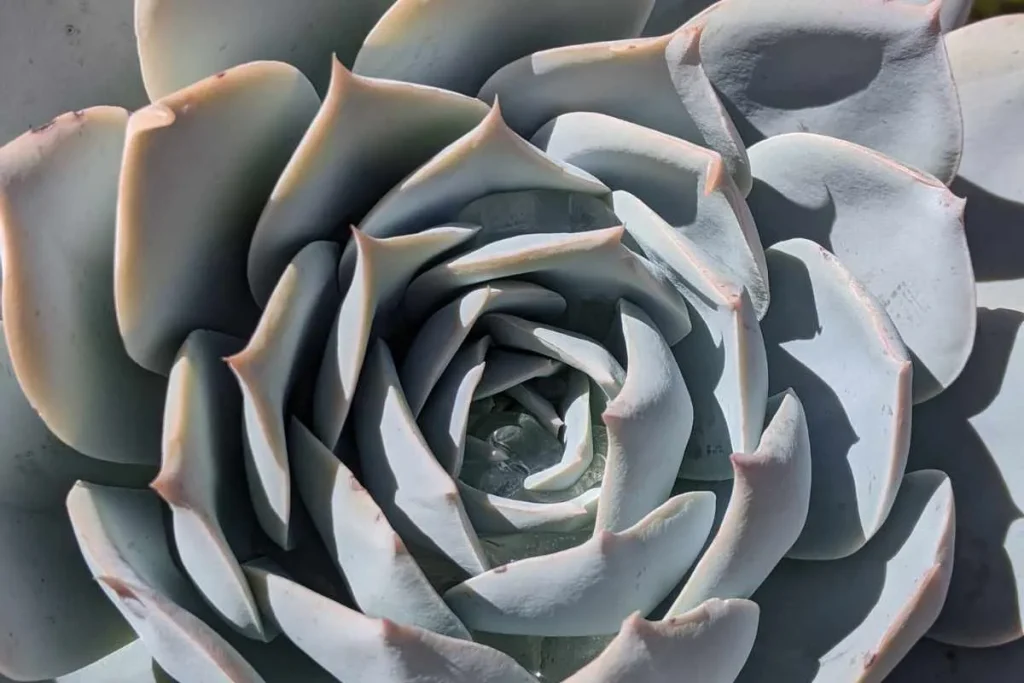
How Long to Leave it on Succulents
Diatomaceous earth can remain effective for several weeks, but it’s important to reapply it after rain or watering. As a general rule, reapply every two to three weeks or as needed to ensure continued protection against pests.
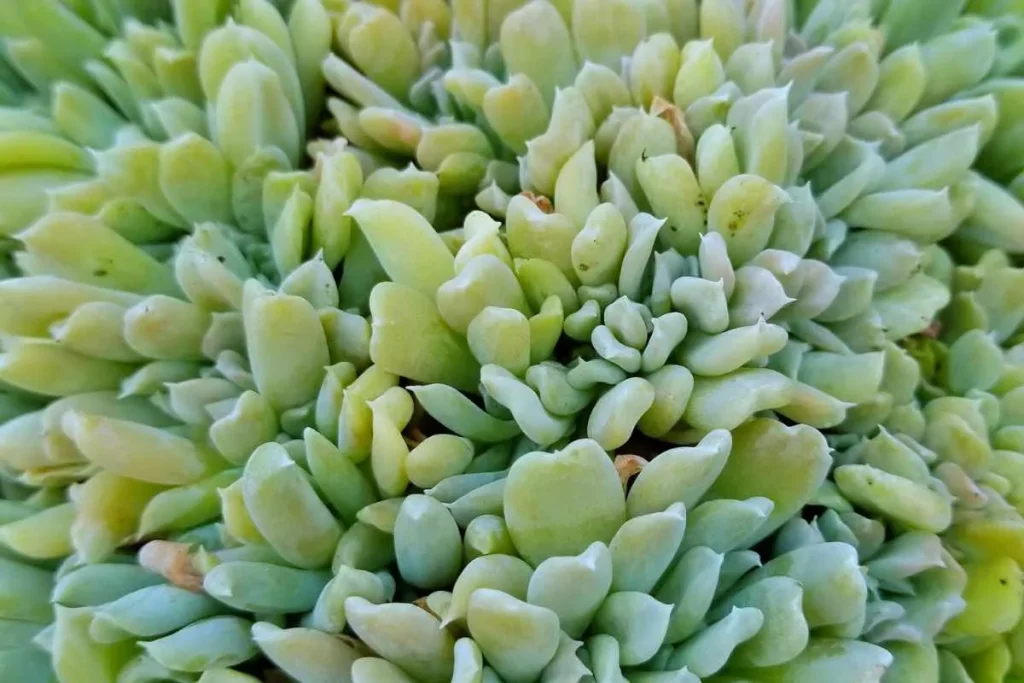
Mixing with Water and Spraying It on Succulents
Yes, you can mix diatomaceous earth with water and spray it on succulents, this method is less effective than sprinkling dry DE directly onto your plants. When DE is mixed with water, it can clump together, making it less effective against pests. It’s best to use DE in its dry form for best results.
Since it is effective in killing pests in its dry state, you can cover more ground with diatomaceous earth when you spray it and after it has dried, any insects that come into contact with it will be killed. Just make sure that you shake your bottle well so there aren’t any clumps that could clog the spray nozzle.
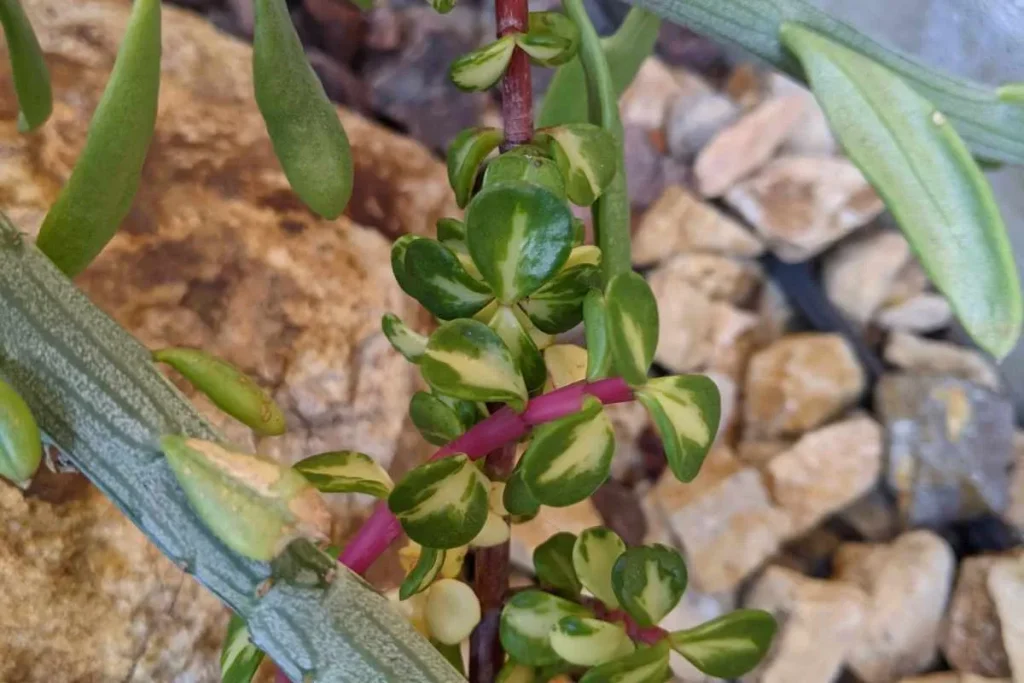
Can Too Much Hurt Succulents?
While DE is a natural and safe way to control pests, too much DE can harm your succulents. Applying too much DE can lead to clumping and prevent proper air circulation, which can suffocate your plants. Be sure to apply it lightly and only as needed.
If you think you’ve applied too much, either use a soft brush to get it off of the succulents or spray them down with water and wait for it to dry.
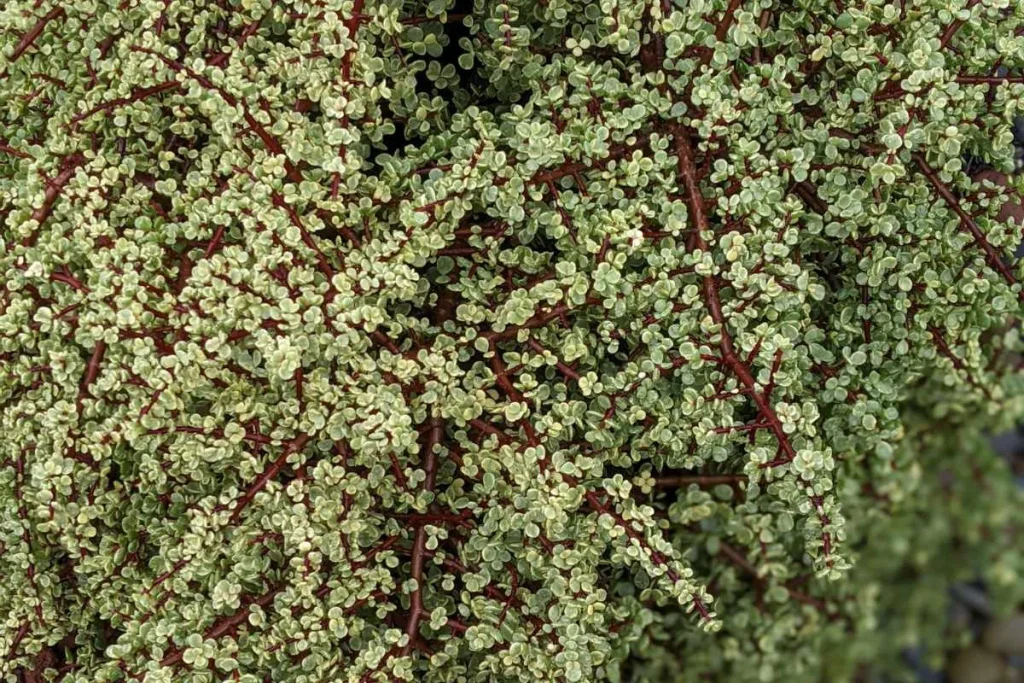
Side Effects
While diatomaceous earth is generally safe for humans and pets, it’s important to take precautions when using it. When handling DE, wear a protective mask to prevent inhalation of the fine powder. Additionally, avoid getting it in your eyes or on your skin, as it can be irritating.
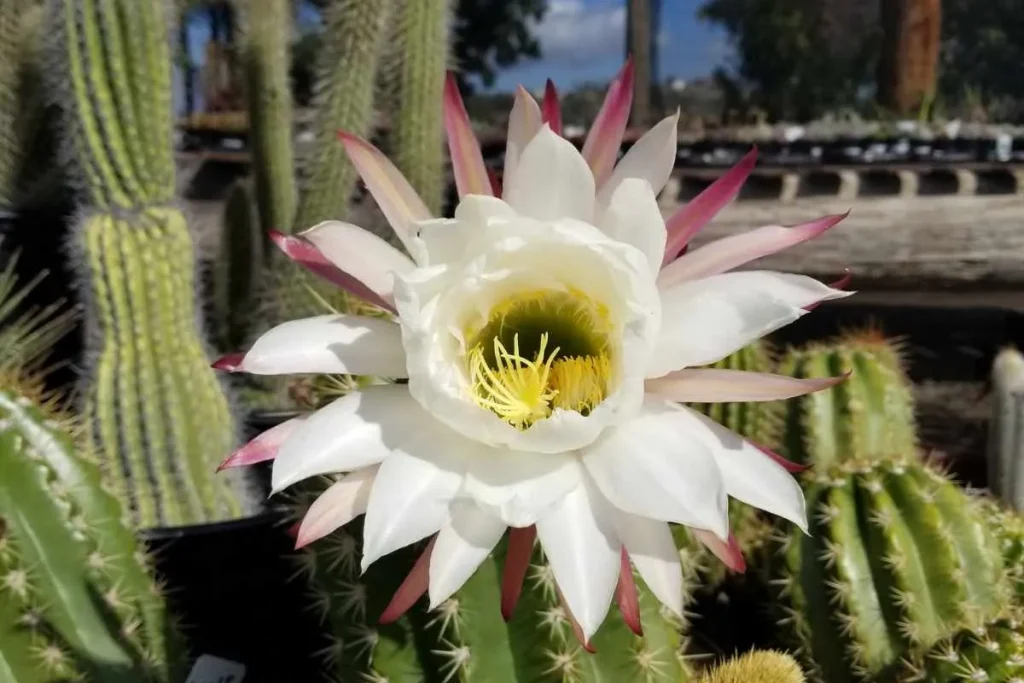
Where to Buy Diatomaceous Earth
I’ve gotten it at Home Depot, Lowes and Amazon. Make sure to buy food grade DE as the pool grade contains additives that can harm succulents. I like the product below since it comes with a little spray duster for easier application.
Using diatomaceous earth is an effective and natural way to control pests on succulents. Follow the guidelines outlined in this guide to ensure the best results and protect your plants from harmful pests. With regular use, DE can help keep your succulents healthy and thriving.
For other pesticide options for succulents, there’s a whole page dedicated to that here: 14 of the WORST Succulent Pests and Diseases, Prevention Tips and Fixes

